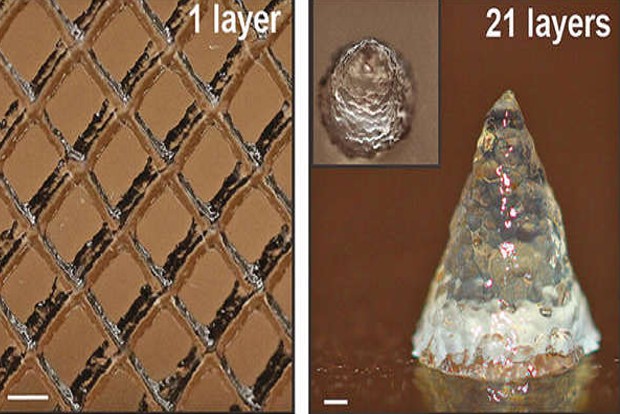Begin typing your search...
Flash Forward: This ink is alive and made entirely of microbes
The thought of combining a printer (the bane of office workers) with the bacterium E. coli (the scourge of romaine lettuce) may seem an odd, if not unpleasant, collaboration.

Chennai
But scientists have recently melded the virtues of the infuriating tool and of the toxic microbe to produce an ink that is alive, made entirely from microbes. The microbial ink flows like toothpaste under pressure and can be 3D-printed into various tiny shapes — a circle, a square and a cone — all of which hold their form and glisten like Jell-O.
The researchers describe their recipe for their programmable, microbial ink in a study published on Tuesday in the journal Nature Communications. The material is still being developed, but the authors suggest that the ink could be a crucial renewable building material, able to grow and heal itself and ideal for constructing sustainable homes on Earth and in space.
This new substance is not the first-ever living ink. Scientists have previously created printable gels that were cocktails of bacteria and polymers that helped provide structure when printed. One such ink contained hyaluronic acid, a seaweed extract and fumed silica — all agents that made the material thicker and more viscous.
But the new substance contains no additional polymers; it is produced entirely from genetically engineered E. coli bacteria. The researchers induce bacterial cultures to grow the ink, which is also made of living bacteria cells. When the ink is harvested from the liquid culture, it becomes firm like gelatin and can be plugged into 3D-printers and printed into living structures, which do not grow further and remain in their printed forms.
“They developed this really nice engineered platform where the microbes secrete their own ink,” said Sujit Datta, a chemical and biological engineer at Princeton University who was not involved with the research. “The microbes are creating the material themselves — you just have to feed them and keep them happy.” Bacteria may seem an unconventional building block. But microbes are a crucial component of products such as perfumes and vitamins, and scientists have already engineered microbes to produce biodegradable plastics.
A material like a microbial ink has more grandiose ambitions, according to Neel Joshi, a synthetic biologist at Northeastern University and an author on the new paper. Such inks are an expanding focus of the field of engineered living materials. Unlike structures cast from concrete or plastic, living systems would be autonomous, adaptive to environmental cues and able to regenerate — at least, that is the aspirational goal, Dr. Joshi said.
“Imagine creating buildings that heal themselves,” Dr. Datta said. To Dr. Joshi, the best analogy may be a seed’s transformation into a tree. A seed has all the information it needs to harvest the energy of the sun and organise its growth and development into something as complex and grand as a tree. In an engineered living system, a single engineered cell could function like a seed. Microbes, on their own, aren’t great at making clearly defined shapes in three dimensions. “Think of pond scum,” Dr. Joshi said. “That’s kind of the level of complexity that bacteria are comfortable with, in terms of making shapes.”
Imbler is a journalist with NYT©2021
The New York Times
Visit news.dtnext.in to explore our interactive epaper!
Download the DT Next app for more exciting features!
Click here for iOS
Click here for Android
Next Story



